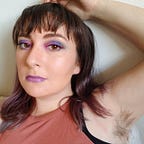David Dobrik, James Charles, and the grooming culture of social media
What we can learn from the most recent allegations against high-profile YouTubers
Deja vu: on Friday, an underage fan came forward with allegations that he had been groomed by viral makeup artist and social media influencer, James Charles. This is the second time an underage fan has made such a statement, and at least the third time Charles has been publicly accused of being a sexual predator.
James Charles is merely the flavor of the week when it comes to influencers who are alleged abusers. Earlier this month, former Vine stars and podcasters David Dobrik and Jason Nash were criticized by former collaborators on the H3 podcast. The viral pranksters have been accused of passing off bullying, racism, and sexual assault as practical jokes in their vlog series. The former “vlog squad” members claim they felt pressured into participating in their own victimization, hopeful that association with Dobrik and Nash would lead to career success.
Shane Dawson, Jeffree Star, and Tony Lopez made headlines last year with allegations of grooming and sexual misconduct. The most on-going and infamous example of this may be Onision, who was finally removed from the YouTube Partner Program earlier this month (but only after years of being the focus of public scrutiny, including by To Catch a Predator’s Chris Hansen).
These are only a few examples of social media stars being accused sexual predators. Each accusation is worthy of being examined on its own, as these situations are complex and nuanced. However, I would instead like to examine what patterns emerge when all these incidents are taken together.
All of these incidents were enabled by the social media platforms these influencers use. Many times, the platforms themselves are where the acts took place; for Charles, it was in his Instagram and Snapchat DM’s, while for Dobrik and Nash, it was on their YouTube channel.
While the allegations are frequently from underage fans — both girls and boys alike — alleged victims are also often content creators themselves, enticed by opportunities to collaborate with the influencer. In either scenario, fame influences how these relationships unfold.
Eventually, there is a predatory sexual encounter. This ranges from making sexual comments about an underage fan’s body to sending dick picks to physical assault. In the moment, these actions are often characterized as either 1) flirtation, or, 2) jokes, though they are not received that way by the harmed party.
Regardless of the nuances of these encounters, the fallout is the same. Victims feel confused about enduring harm from someone they admire so much, struggling with shame in private. Often, by the time they speak publicly on these incidents, months or years have passed.
When a victim does speak out, their motives are called into question. Fans defend the influencer, usually by counter-accusing the victim. The victims are usually characterized as clout-chasing; often, they are accused of being abusers as well.
These incidents are often left to be decided by the court of public opinion. It is notoriously hard to take legal action against sexual violence, particularly if significant time has passed since the incident.
Platforms like YouTube, TikTok, and Instagram don’t intervene, despite having the ability to deplatform users who violate community guidelines. After all, these personalities have millions of followers across all platforms — that’s ad revenue to be gained from views of their content.
So what can we do? Well, for starters, we could all agree that it’s not okay for underage fans to have relationships with celebrities. Interactions between legally-defined children and the media personalities they love should stay parasocial, and there is no good reason for those interactions to ever be sexualized.
We could also do away with the notion that these alleged predators are somehow victims due to their fame. Now, it’s true that their visibility makes them a target of scrutiny in the press. But it is also true that fame equals power, and that this power creates an uneven power dynamic between the content creator and their alleged target.
Finally, we can demand more accountability from the platforms that facilitate these boundary transgressions. They alone have the power to remove content and content creators from their online spaces. We can avoid giving creators direct views, follows, and clicks to prevent generating profit from controversy.
Of course, I think we should believe people when they say they did not consent. I also don’t think we should look for perfect victims. Instead, we must work harder to see the harm that’s so woven into our reality, it would otherwise be invisible. And we must do what we can to stop it, stitch by stitch.
Thanks to Prateek Katyal from Pexels for the header image.
